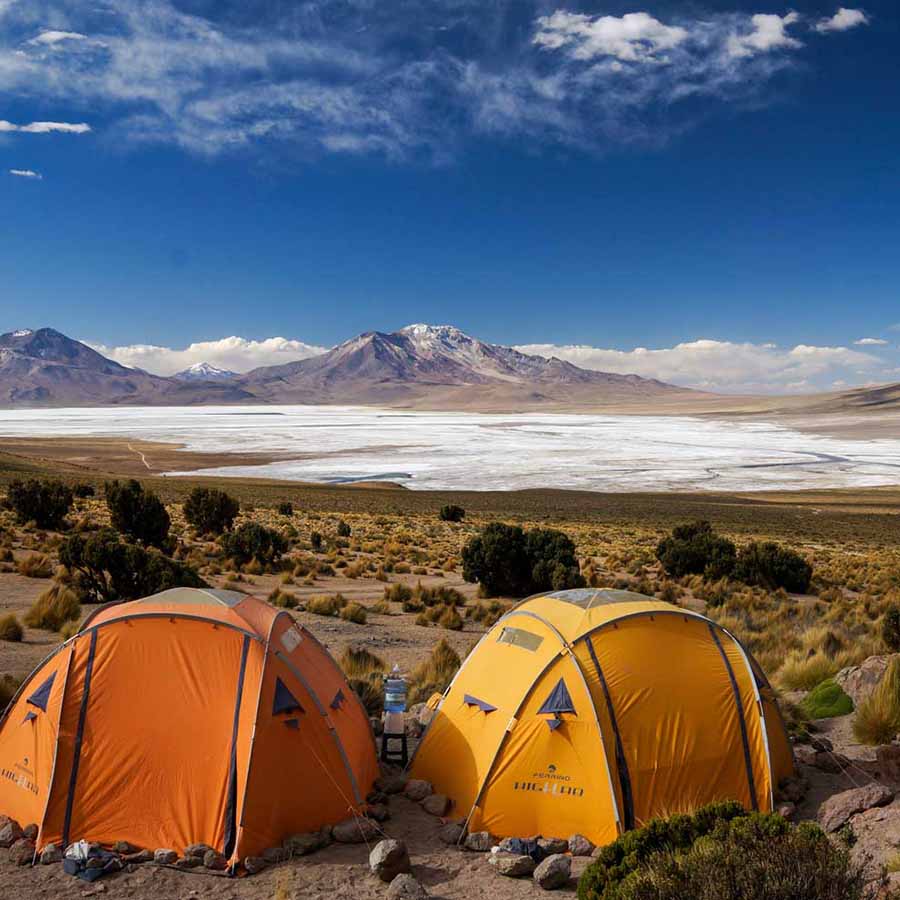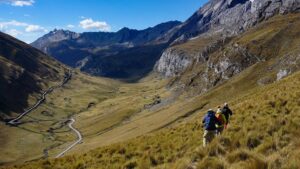On the road in the land of contrasts in the northern Chile – from the desert to over 6,000m.
This demanding trekking trip also makes mountaineers’ hearts beat faster and takes us from the sea to the highest peaks in the region. On the road in the land of contrasts in the north of Chile – from the desert to over 6,000m.
Route
Region
Duration
Dates
Price
PHYsical level
Technical level
Altitude
Security


Expedition Itinerary
Ready for the adventure?
DAY 1: Arrival
DAY 2: Iquique – Laonzana – Mocha
DAY 3: Mocha – Huaviña – Mocha
DAY 4: Mocha – Usmagama – Chusmiza
DAY 5: Chuzmiza – Rio Aroma
DAY 6: Rio Aroma – Cañadon
DAY 7: Cañadon – Churuyo
DAY 8: Churuyo – Paso Toroni – Churuyo
DAY 9: Churuyo – BC Isluga
DAY 10: BC Isluga – Crater Isluga – BC Isluga
DAY 11: BC Isluga – Salar de Surire
DAY 12: Salar de Surire – Cerro Rojo – Salar de Surire
DAY 13: Salar de Surire – BC Guallatire
DAY 14: BC Guallatire – Guallatire Climb – BC Guallatire
DAY 15: BC Guallatire – Arica
DAY 16: Arica-Out
difficulty level
Physical requirement
Technical level
Easy
Medium
Hard
Expert
expedition season
Jan
Apr
Aug
Dec
What IS includeD?
Mountain guide
Experienced and multilingual mountain guide (Spanish, English, German)
Hotel
3 – 4* Hotels.
Security
Safety and emergency equipment: radio equipment, satellite phone, oxygen, emergency medicine, all permits for the expedition.
Transfers
Private vehicles (Toyota Hilux 4×4 or similar) throughout the Expedition.
Food
1 cook throughout the expedition.
not included
Not included
- National and international flights.
- Personal travel insurance.
- Any additional costs incurred for program changes due to exceptional circumstances (eg extreme weather, natural disasters, strikes, etc.).
- Any additional costs incurred due to the participant’s request.
- Program changes.
- Porters.
- Drinks in hotels/restaurants.
- Personal excess baggage charges.
- Any additional costs incurred due to the participant’s request program changes.
- Individual supplement in hotels/pensions.
- Individual occupancy in double tents.
- Tips.
- Personal Equipment (See recommended equipment).
- Any other service not included in the program.















